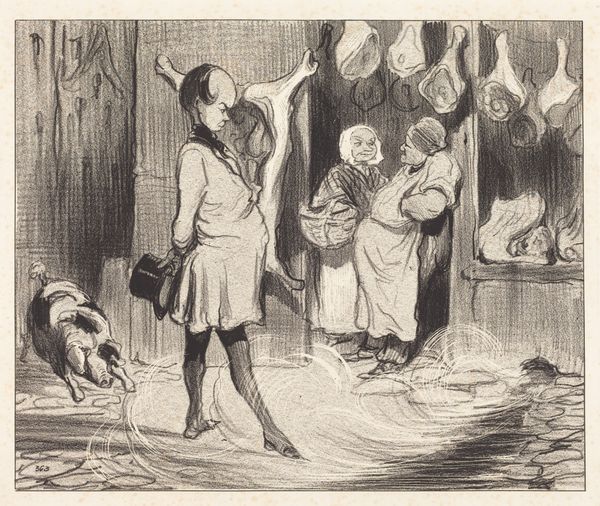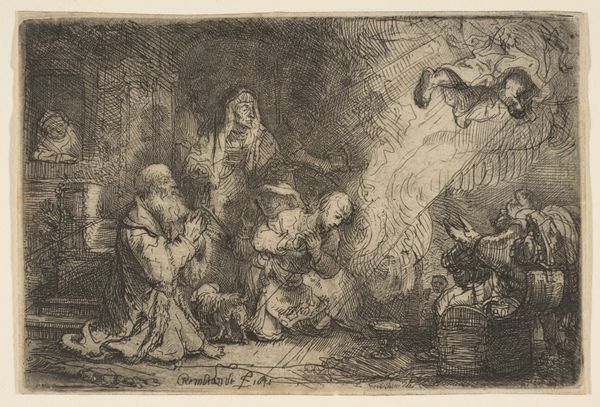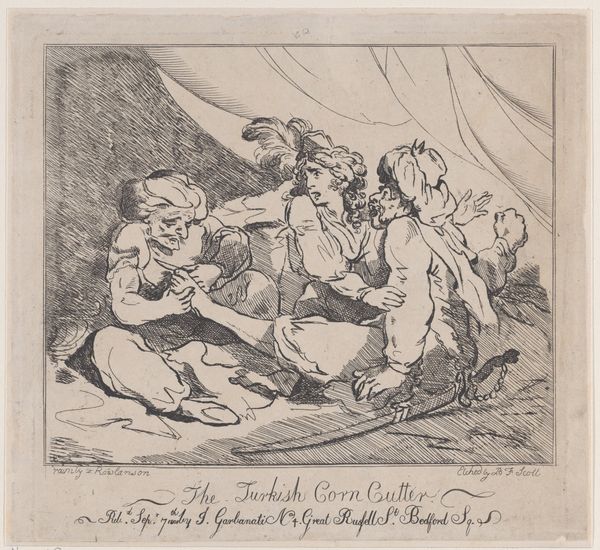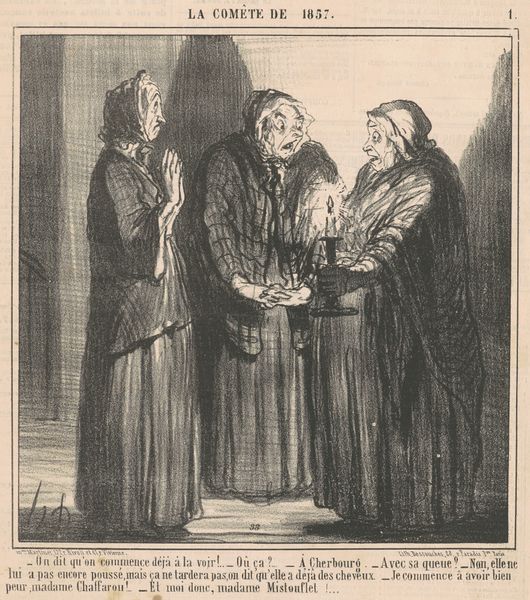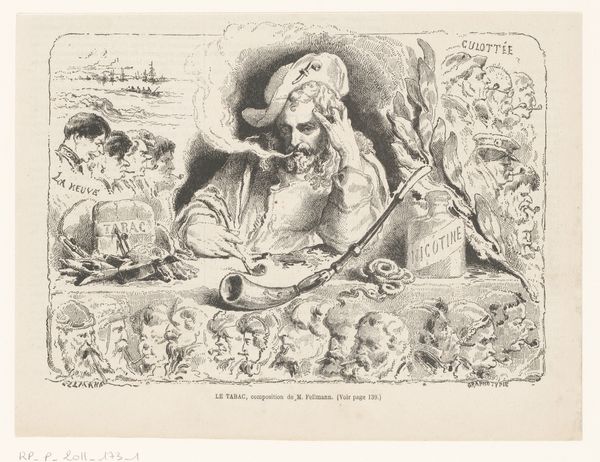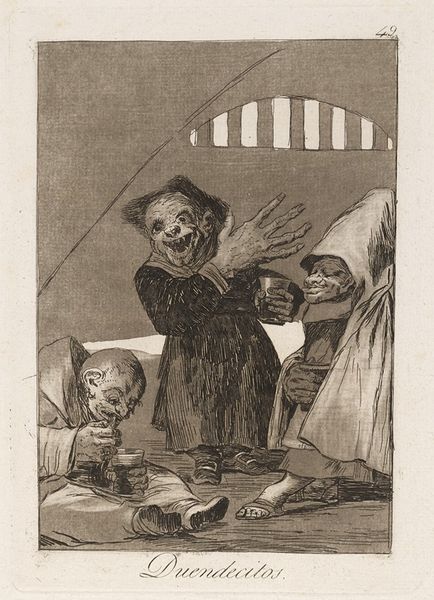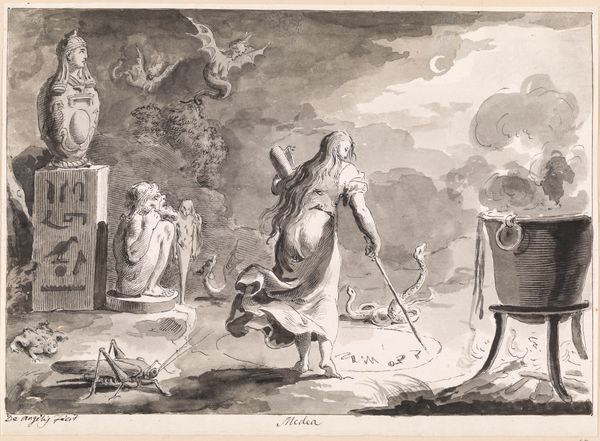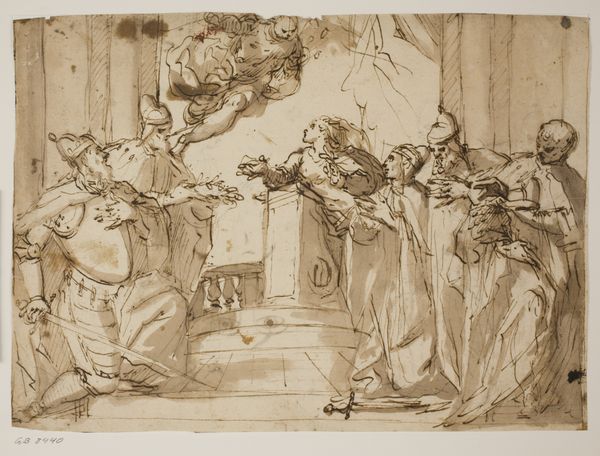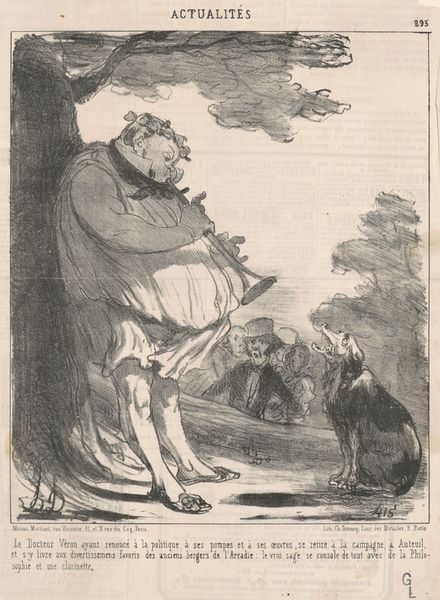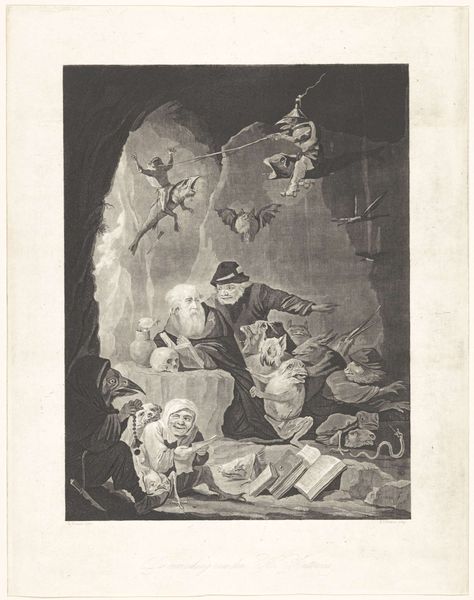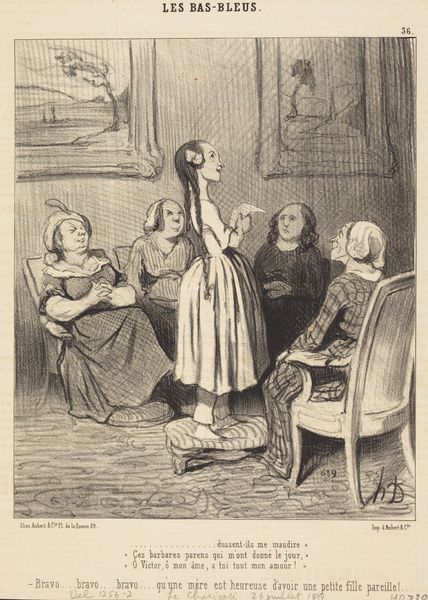
drawing, lithograph, print, pencil
#
drawing
#
lithograph
# print
#
caricature
#
pencil sketch
#
romanticism
#
pencil
#
genre-painting
Copyright: National Gallery of Art: CC0 1.0
Editor: So, here we have Honoré Daumier’s “Floraison du Cactus-grandiflorus…", a lithograph dating back to the 19th century. It strikes me as almost a clandestine gathering, lit eerily by candlelight. What can you tell me about this piece? Curator: What grabs me is how the lithographic process allows for the mass production of these satirical images. Daumier was using the available technology to distribute commentary on society to a broader audience. The labour involved in creating the image and then replicating it – the means of production – are key to its function. What are these people celebrating, and how does Daumier implicate their labor in the meaning making of this artwork? Editor: I guess I hadn’t thought about the technical reproduction element and distribution of these prints... You’re asking about what the depicted subject says about wider access, that Daumier is democratising representation. What do you see in the faces and expressions? They all look slightly grotesque, lit from below... Curator: Indeed! The caricature, reproduced and distributed, satirizes particular types within the French bourgeoisie. Daumier’s commentary seems to consider consumption. It encourages questioning; who is benefitting, who isn't? How did Daumier contribute to a political awakening with popular printmaking like this? Editor: It's fascinating to consider this through the lens of mass production and social critique. I had originally seen this as just an eerie caricature. Curator: Exactly! Looking closely at the materials, labour, and process of creation illuminates how Daumier contributed to public opinion. Considering mass access and production reveals something critical about Daumier's position on capitalism, no?
Comments
No comments
Be the first to comment and join the conversation on the ultimate creative platform.
